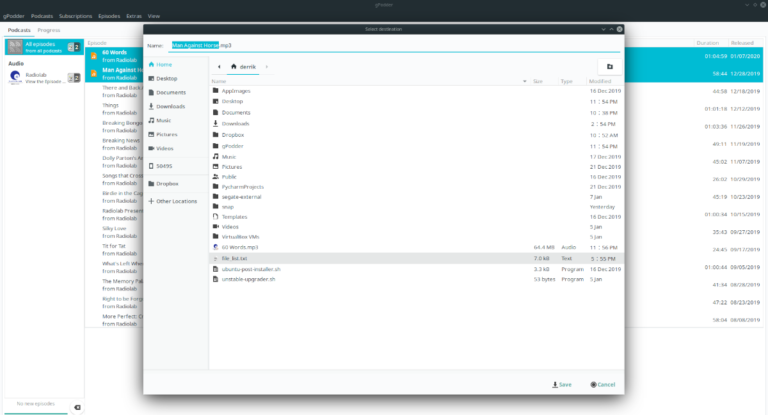

Modify the Message, restart gPodder and see the updated notification when you click Say Hello.

The folder doesn’t exist by default, so create it.Ĭopy it to GPODDER_HOME/Extensions and restart gPodder.Įxtensions are activated from the Extensions pane of the Preferences dialog.Īctivate the Hello World Extension to get a item in the Extras menu called Getting startedĮxtensions are loaded from the Extensions folder in the gPodder Home Folder. Youtube_dl - enhanced youtube subscriptions and downloads using youtube-dlĮxtensions are a great way to customize your gPodder workflow: you’ll be able to customize the UI, rename, modify or triggerĮxternal programs when episodes are downloaded, etc.Video Converter - Transcode video files to avi/mp4/m4v.
GPODDER TUTORIAL DOWNLOAD
Ubuntu Unity Integration - Show download progress in the Unity Launcher icon.Ubuntu App Indicator - Show a status indicator in the top bar.
GPODDER TUTORIAL WINDOWS
Taskbar Progress - Displays the progress on the Windows taskbar.Tag downloaded files using Mutagen - Add episode and podcast titles to MP3/OGG tags.Subtitle Downloader for TED Talks - Downloads.

GPODDER TUTORIAL MP4

Audio Converter - Transcode audio files to mp3/ogg.The following extensions are included with gPodder 3: Ubuntu Unity support in gPodder 3 is implemented as an extension). Some extensions are already activated by default if you are running a specific environment (e.g. Note that this enviroment variable is not set permanently, and has to be set again next time you start gPodder.Extensions are gPodder’s mechanism for adding optional features and allowing easy customizability. Now gPodder should run with an English UI. Set the LANGUAGE environment variable: Use the following command: Now the cursor should have "C:\Program Files (x86)\gPodder\bin>" as a prefix. Go to the gPodder installed directory (my example is the default directory of the EXE installer, yours may differ) by entering the following command:Īnd press Enter key. Go to the gPodder directory: In the terminal, you can see a blinking cursor, that's for you to type your command. Now a window with black background opens, that's Windows terminal. Open a Windows terminal: Press the Win+R key combination, type "cmd.exe" in the poped out dialog box, press "OK" button. I'm going to write a step-by-step guide based on my own effort to achieve this on Windows 10, hope it will be helpful to other users. You should set the environment variable LANGUAGE=en


 0 kommentar(er)
0 kommentar(er)
